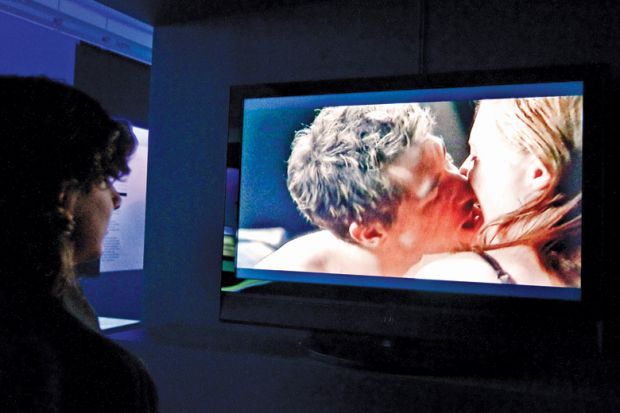“All museums are sex museums,” claims Jennifer Tyburczy. Really? I can think of several examples, over the centuries, of “Secret Museums” of artefacts whose explicit and obscene nature made them unsuited for display to the general public – although entirely fit viewing for elite male connoisseurs. But all museums? On reading further in this book, however, I’m inclined to agree: by excluding certain kinds of representation, and codifying others as “high art”, and making choices about what is exhibited, museums and galleries make statements about sex and its place, even if it is rendered almost invisible or, at least, inexplicit.
Sex in museums has a somewhat convoluted genealogy. The Western high art tradition legitimised female nudes within certain parameters of acceptability. But there are roots also in freak shows and anatomical museums, where gestures towards educational value provided an excuse for commercial entertainment. Twenty-first century for-profit sex museums with strategically placed gift shops selling sex toys and works of erotica are perhaps descendants of 19th-century anatomical museums, although they exploit concerns over the quality of individuals’ or couples’ sex lives instead of purveying quack remedies for the consequences of the wrong sorts of sex.
The notion of elite male connoisseurship enabled certain individuals to acquire and look at certain works prohibited to others and to draw the lines as to who might be a spectator. Tyburczy, a feminist studies scholar, disentangles the ownership history of Gustave Courbet’s L’Origine du Monde, which features on the cover of the book with its most centrally controversial element – the close-up of a vulva – occluded by the head of what appears to be a female spectator. She also describes the various rituals by which owners unveiled it to favoured guests, and such viewer responses as have been preserved for posterity.
Depictions that disturb accepted notions of the appropriately sexual for public display have been the subject of attacks, physical, critical, ideological and financial. Perhaps the most notorious physical attack on the painting of a female nude was suffrage activist Mary Richardson taking an axe to the Rokeby Venus in 1914; but in fact men have been responsible for by far the greatest number of acts of vandalism against art objects in museums, and a significant number of these attacks have been on female nudes. Attacks on artists who dared to paint nudes contravening the idealised conventions of the genre frequently came from male art critics and students.
The Nazi-initiated Degenerate Art exhibition in 1937 was a particularly flagrant example of a political attack on certain kinds of representation that failed to depict approved idealised Aryan bodies. It is, however, strange to find only one fleeting mention of homophile campaigner Magnus Hirchsfeld’s Berlin Institut für Sexualwissenschaft (Institute for Sex Research), 1919-33, with its Museum of Sex, which was destroyed by the Nazis in 1933. An early endeavour towards disrupting unspoken norms, this museum was surely a pioneering example of what Tyburczy terms “queer curatorship”.
The power of money has been wielded against disturbing depictions, whether through protests against tax-funded obscenity or fears of board members and donors about institutional reputation. Tyburczy presents evidence that the audience(s) for museums may be more open to sexual displays than gatekeepers suppose, but user feedback suggests unanswered questions about what the public expects from a sex museum. Perhaps there are differing desires?
Lesley A. Hall is research fellow at the Wellcome Library and honorary senior lecturer in the department of science and technology studies, University College London.
Sex Museums: The Politics and Performance of Display
By Jennifer Tyburczy
University of Chicago Press, 296pp, £73.50 and £26.50
ISBN 9780226315102, 5249 and 5386 (e-book)
Published 1 March 2016
POSTSCRIPT:
Print headline: Curators do it all day long
Register to continue
Why register?
- Registration is free and only takes a moment
- Once registered, you can read 3 articles a month
- Sign up for our newsletter
Subscribe
Or subscribe for unlimited access to:
- Unlimited access to news, views, insights & reviews
- Digital editions
- Digital access to THE’s university and college rankings analysis
Already registered or a current subscriber?




